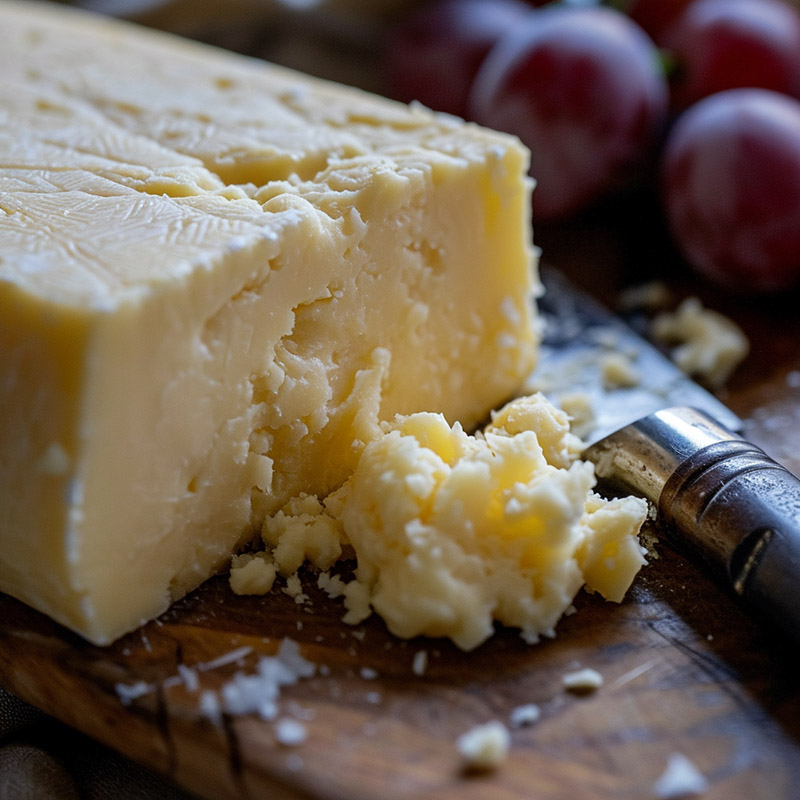
Irish Cheddar, a distinct variety of cheddar cheese, hails from Ireland, a country renowned for its rich dairy tradition and lush green pastures. This cheese is a testament to Ireland's deep-rooted agricultural heritage and its expertise in dairy production. Irish Cheddar stands out in the world of cheese for its quality, flavor, and the traditional methods used in its production.

One of the defining characteristics of Irish Cheddar is the quality of the milk used in its production. Ireland's temperate climate, consistent rainfall, and rich grasslands create perfect conditions for dairy farming. The milk produced by Irish cows, which graze on these nutrient-rich pastures, is full-bodied and creamy, lending Irish Cheddar its distinctive taste and texture.

Irish Cheddar varies in flavor depending on its age. Young Irish Cheddar is typically mild, creamy, and has a slightly springy texture, making it an excellent choice for sandwiches, burgers, or as a snack with fruits and crackers. As it ages, the flavor becomes more pronounced, taking on nuttier, sharper, and more complex profiles. Aged Irish Cheddar can be quite robust and tangy, with a firmer texture that crumbles and melts well, ideal for cooking, grating over dishes, or savoring on its own.
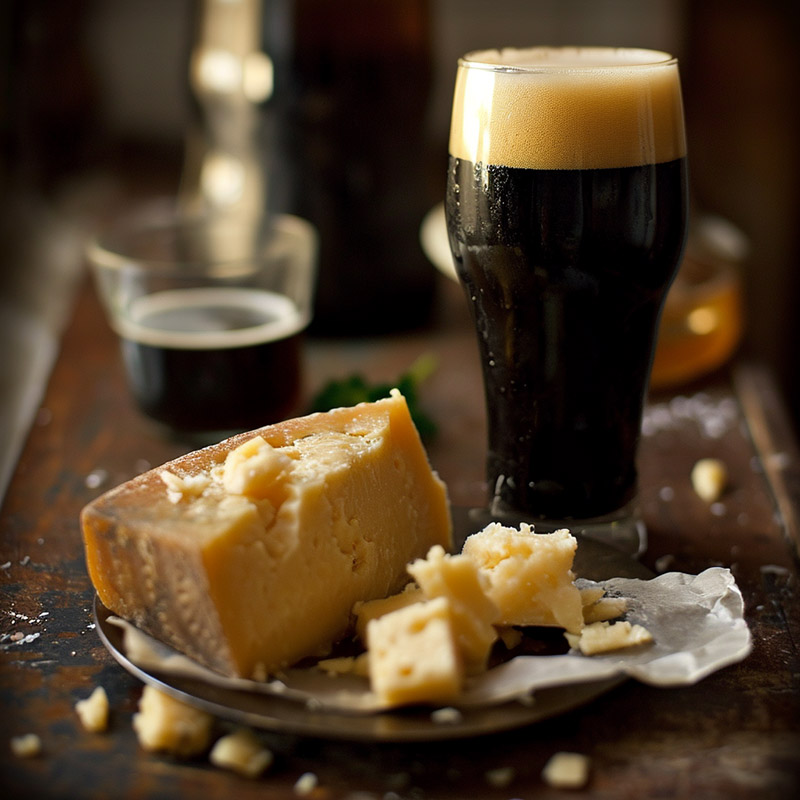
The color of Irish Cheddar can range from white to deep yellow. This variation is primarily due to the diet of the cows; the rich grass they feed on is high in beta-carotene, which can impart a yellow hue to the cheese. Some Irish Cheddars may also have added colorants to achieve a consistent appearance, a practice seen in many cheddar cheeses.
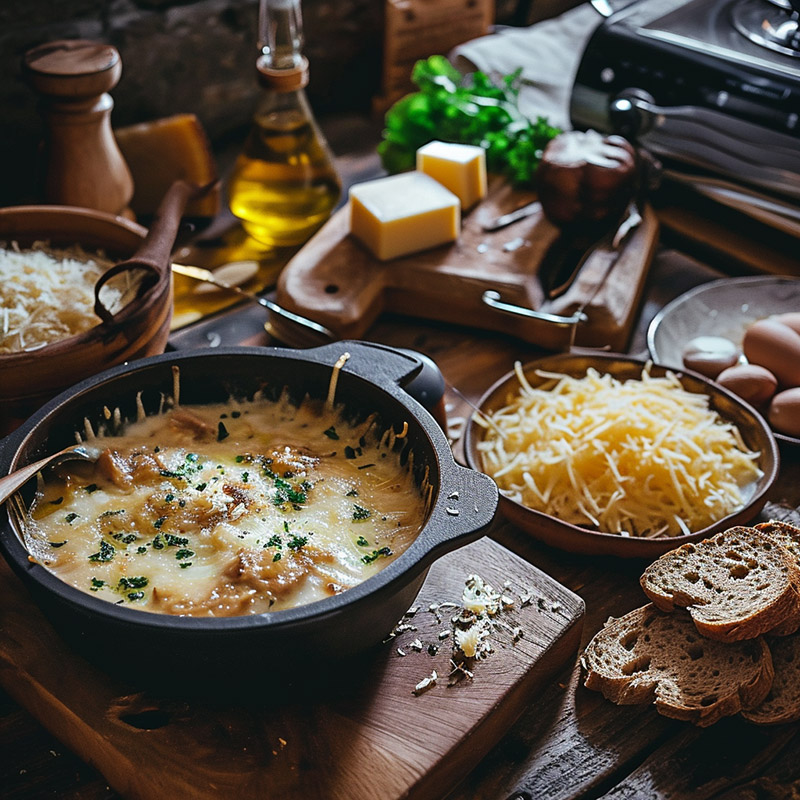
In terms of culinary use, Irish Cheddar is incredibly versatile. It can be used in a variety of dishes, from classic cheese sauces and soups to gratins, omelets, and quiches. It pairs well with apples, pears, nuts, and a variety of bread and crackers. In terms of wine pairing, a sharp Irish Cheddar goes well with full-bodied wines like Cabernet Sauvignon or aged spirits like whiskey, which complement its rich flavors.
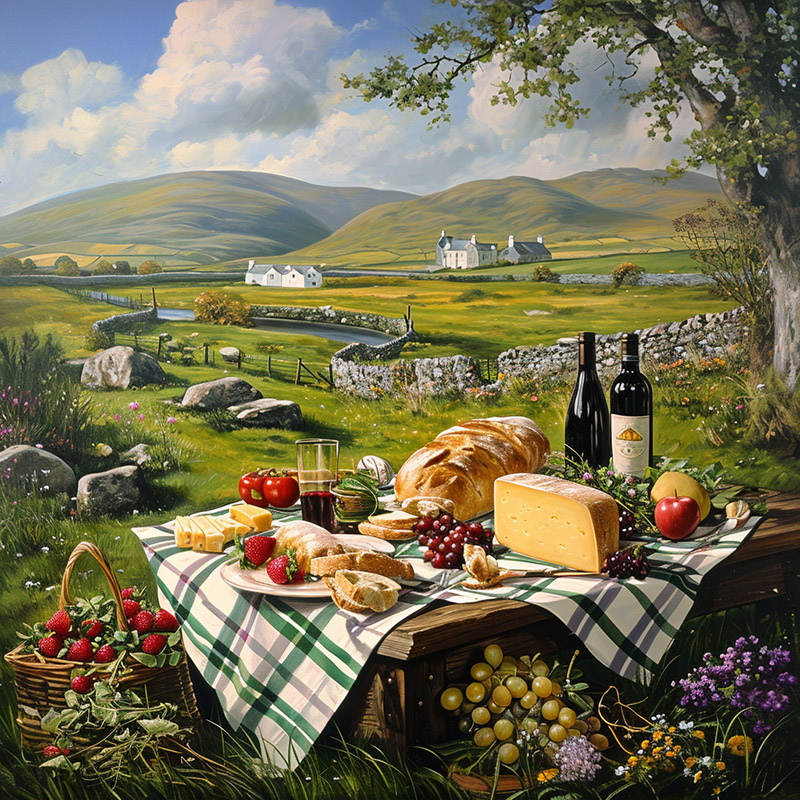
From a nutritional standpoint, like other cheeses, Irish Cheddar is a good source of protein and calcium. However, it is also high in saturated fats and should be consumed in moderation, especially by individuals monitoring their fat intake.

Irish Cheddar's appeal also lies in its cultural significance. It reflects Ireland's dairy farming traditions and commitment to natural, high-quality food production. In Ireland, cheddar is not just a staple product but also a symbol of national pride, representing centuries of agricultural knowledge and a deep connection to the land.

Irish Cheddar is a flavorful, versatile cheese that reflects the natural bounty of Ireland's pastures and the country's expertise in dairy production. Whether enjoyed in its younger, milder form or savored as a more aged, robust cheese, Irish Cheddar offers a delightful taste experience, rooted in the rich heritage and natural landscape of Ireland.
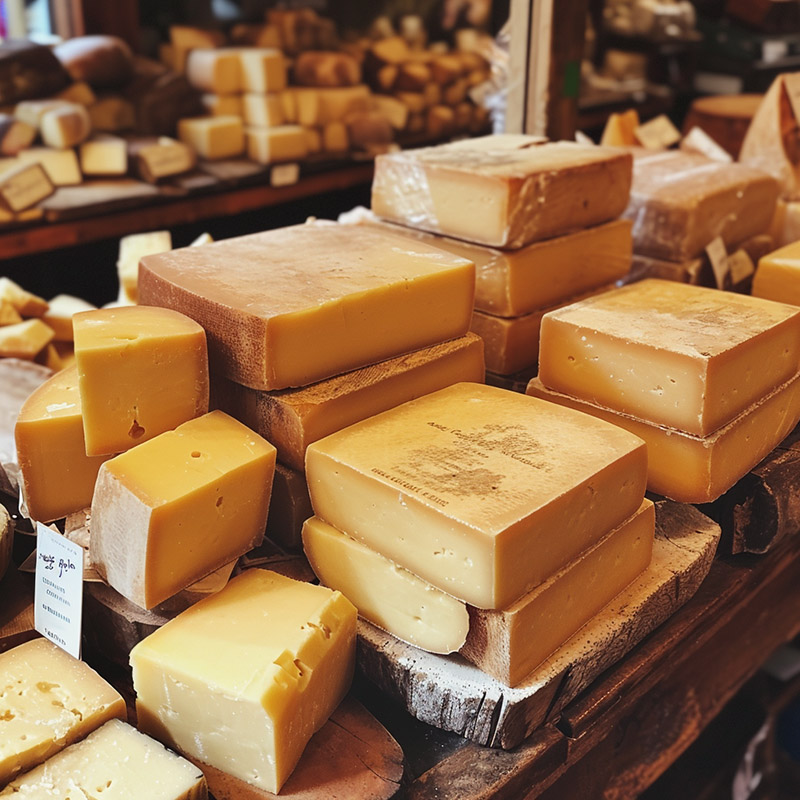
Industry
The Irish dairy industry is considered vulnerable to the price pressures of the commodity market, on which it is highly dependent. Hence, a broadening of the product base, would reduce exposure to this market while offering the potential of exploiting the lucrative added value market. This involves risks and challenges. The cheese market in particular continues to grow and investment in innovative products have in some cases been highly successful. However, a number of obstacles confront Irish cheese manufacturers. These include: seasonality of milk supply, strong tradition of Cheddar production, knowledge gaps in industrial-scale specialty cheese manufacture, and a reticence to commit significant investment, particularly in plant. To address some of these obstacles a project was undertaken with the overall objective of developing a range of cheeses with novel flavor, texture, and appearance which were complementary to existing manufacturing plant and technologies.
